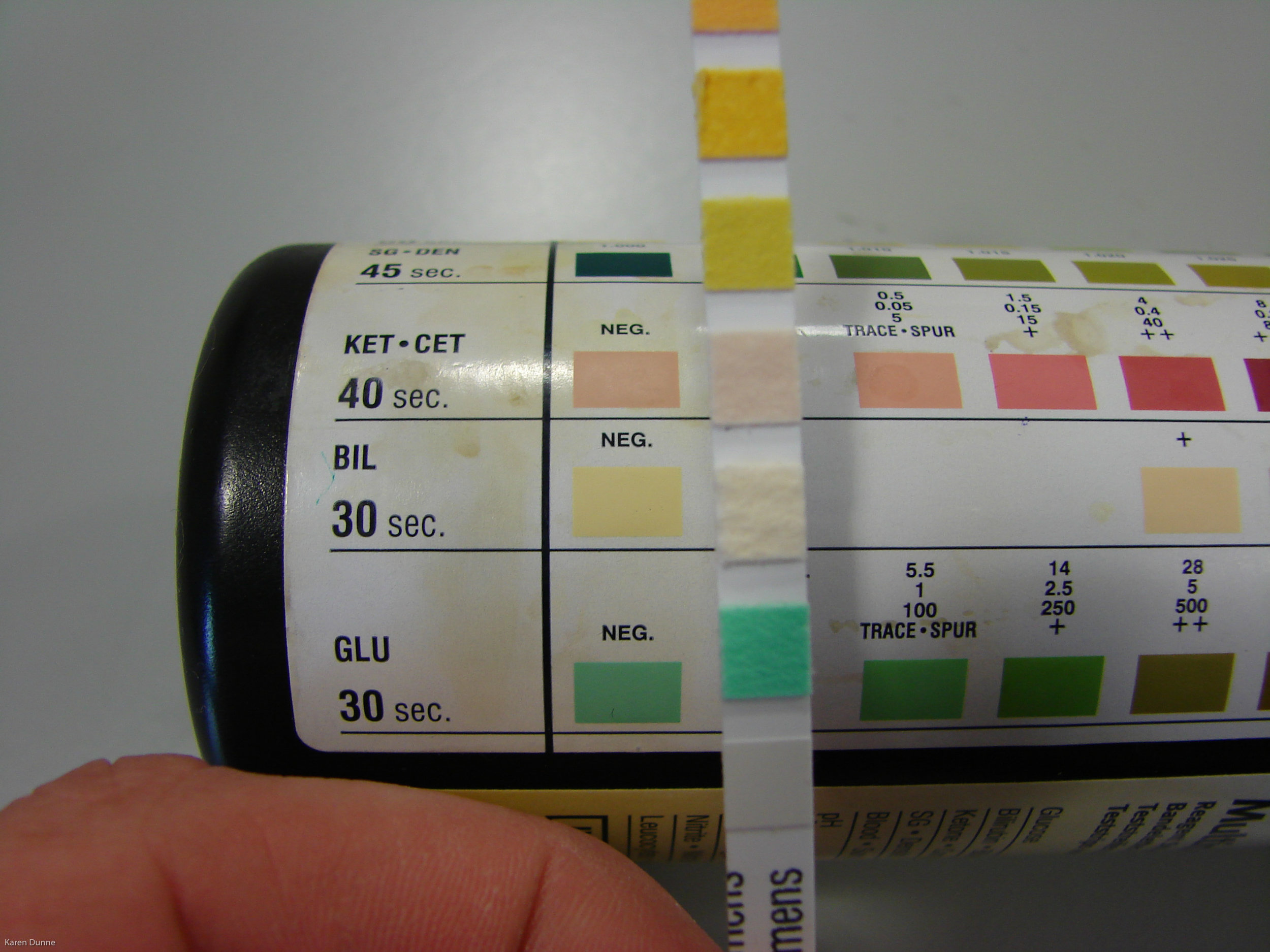Urine test strips
Reagent strips
Chemical examination of a urine sample typically requires the use of reagent strips. These may also be referred to a test strips or dipsticks. Each strip contains a number of coloured pads, one for each urine component being tested for. It is important to always check and follow the specific instructions for the strips you are using, as they vary.
Once the strip has been dipped in the urine you must note the time and read the results at the correct intervals. A colour change guide is usually printed on the outside of the container or packaging. If there is no change the result is negative for that parameter. The degree of colour change that occurs is typically recorded as -, trace, +, ++, +++ or ++++. These are semi-quantitative results and the packaging will indicate approximately what concentration of the constituent is present in the sample. However, when it comes to recording the results it is sufficient to just note the degree of colour change that occurred e.g. "glucose: ++".
When reading the result hold the stick in your left hand and the container in your right. Align the stick at ninety degrees to the container and read from the bottom of the stick to the top (figure 1). This makes it easy to correctly align the pads on the stick with their corresponding colour change scale.
Figure 1. Correctly aligned stick & container. In this example the glucose & bilirubin results should be read 30 seconds after wetting the pads.
Equipment:
- Disposable gloves
- In date reagent sticks
- Urine sample
- Watch or timer
- Means to record the results
- Clinical waste bin (for used dipsticks)
Watch the video below to see how to perform the test.
Video 1. How to use reagent sticks to test urine.
A note on leucocytes: some reagent strips may indicate the presence of WBCs in the sample. However, false-positives are common, especially in cats. Positive results should therefore be confirmed by microscopic examination of the sample.

